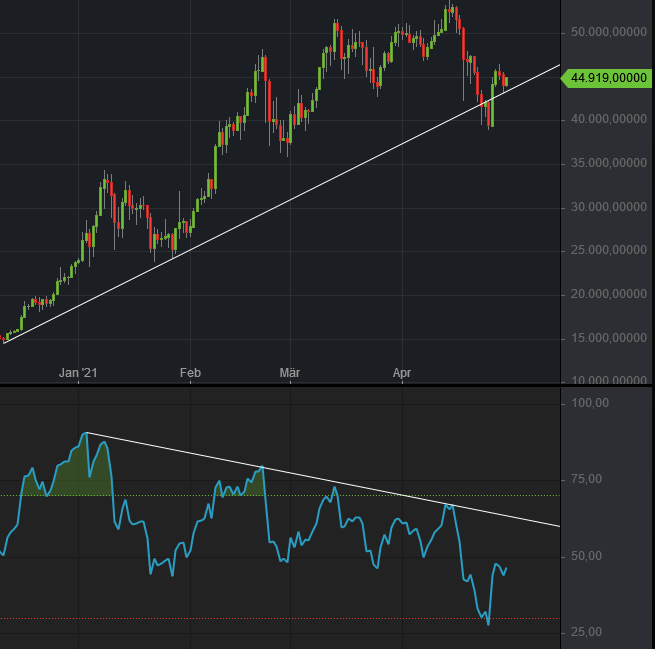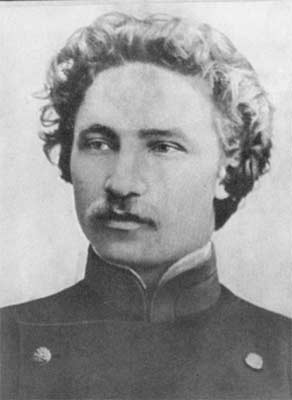|
RSI
RSI may refer to: Broadcasting services * Radio Singapore International, a former radio broadcaster in Singapore * Radio Slovenia International, the international service of Slovenian state radio * Radiotelevisione svizzera di lingua italiana, a Swiss radio and television broadcaster Computing * RSI register, a 64-bit processor register of x86 CPUs * Relational Semantics, Inc., an American software company Finance * Relative strength index, a technical indicator used in the analysis of financial markets * Revenue and Social Insurance number, an identifier used for tax and welfare purposes in Ireland Medicine and psychology * Rapid sequence induction, a method of emergency intubation, involving paralytics and sedation * Repetitive strain injury, a disorder affecting muscles, tendons and nerves from repetitive movements, forceful exertions, vibrations, mechanical compression, or sustained/awkward positions * Residual self image, the concept that individuals tend to think of th ... [...More Info...] [...Related Items...] OR: [Wikipedia] [Google] [Baidu] |
Relative Strength Index
The relative strength index (RSI) is a technical indicator used in the analysis of financial markets. It is intended to chart the current and historical strength or weakness of a stock or market based on the closing prices of a recent trading period. The indicator should not be confused with relative strength. The RSI is classified as a momentum oscillator, measuring the velocity and magnitude of price movements. Momentum is the rate of the rise or fall in price. The relative strength RS is given as the ratio of higher closes to lower closes, with closes here meaning averages of absolute values of price changes. The RSI computes momentum as the ratio of higher closes to overall closes: stocks which have had more or stronger positive changes have a higher RSI than stocks which have had more or stronger negative changes. The RSI is most typically used on a 14-day timeframe, measured on a scale from 0 to 100, with high and low levels marked at 70 and 30, respectively. Short or longer ... [...More Info...] [...Related Items...] OR: [Wikipedia] [Google] [Baidu] |
Radiotelevisione Svizzera Di Lingua Italiana
Radiotelevisione svizzera di lingua italiana (; RSI, abbreviated as RTSI until 28 February 2009) is a Swiss public broadcasting organisation, part of SRG SSR. RSI handles production and broadcasting of radio and television programs in Italian for Switzerland (Italian-speaking Switzerland). RSI's administrative headquarters are located in Via Canevascini in Lugano- Besso. History "Radio svizzera di lingua italiana" was established in 1925 as "Radio Monte Ceneri", originally named after the mountain where the transmitter was placed. After several years of experimental broadcast, in 1933 the "Società svizzera di Radiodiffusione" (Swiss Radio Broadcasting Corporation) began regular transmissions in Ticino and Grigioni. The intentions of its founders were to promote cohesion in the confederation while promoting the value of the Swiss Italian culture. In the 1930s and 1940s, when most of Switzerland's neighboring states were under fascism ( Italian Fascism and National Socialism), Ra ... [...More Info...] [...Related Items...] OR: [Wikipedia] [Google] [Baidu] |
Research Science Institute
The Research Science Institute (RSI) is an international summer research program for high school students. RSI is sponsored by the Center for Excellence in Education (CEE) and hosted by MIT in Cambridge, Massachusetts. RSI brings together the top STEM talent from around the world for the opportunity to conduct original scientific research, cost-free, for six weeks during the summer, before their final year of high school. History The Research Science Institute was founded in 1984 by Admiral H.G. Rickover and Joann P. DiGennaro. It was originally called the "Rickover Science Institute" until the 1986 session, when it was renamed to its current name. The original name is also the source of the nickname of RSI attendees, "Rickoids". Program RSI is run by CEE president Joann P. DiGennaro and Executive Vice President Maite P. Ballestero. 100 students from several countries (generally, two-thirds of the students are from the United States and one-third from other countries) are select ... [...More Info...] [...Related Items...] OR: [Wikipedia] [Google] [Baidu] |
Repetitive Strain Injury
A repetitive strain injury (RSI) is an injury to part of the musculoskeletal or nervous system caused by repetitive use, vibrations, compression or long periods in a fixed position. Other common names include repetitive stress disorders, cumulative trauma disorders (CTDs), and overuse syndrome. Signs and symptoms Some examples of symptoms experienced by patients with RSI are aching, pulsing pain, tingling and extremity weakness, initially presenting with intermittent discomfort and then with a higher degree of frequency. Definition Repetitive strain injury (RSI) and associative trauma orders are umbrella terms used to refer to several discrete conditions that can be associated with repetitive tasks, forceful exertions, vibrations, mechanical compression, sustained or awkward positions, or repetitive eccentric contractions. The exact terminology is controversial, but the terms now used by the United States Department of Labor and the National Institute of Occupational Safe ... [...More Info...] [...Related Items...] OR: [Wikipedia] [Google] [Baidu] |
Red Sports International
The International Association of Red Sports and Gymnastics Associations, commonly known as Red Sport International (RSI) or Sportintern was a Comintern The Communist International (Comintern), also known as the Third International, was a Soviet Union, Soviet-controlled international organization founded in 1919 that advocated world communism. The Comintern resolved at its Second Congress to ...-supported international sports organization established in July 1921. The RSI was established in an effort to form a rival organization to already existing Bourgeoisie, "bourgeois" and Social democracy, social democratic international sporting groups. The RSI was part of a physical culture movement in Union of Soviet Socialist Republics, Soviet Russia linked to the physical training of young people prior to their enlistment in the military. The RSI held 3 summer games and 1 winter games called "Spartakiad" in competition with the Olympic games of the International Olympic Committee be ... [...More Info...] [...Related Items...] OR: [Wikipedia] [Google] [Baidu] |
Rapid Sequence Induction
In advanced airway management, rapid sequence induction (RSI) – also referred to as rapid sequence intubation or as rapid sequence induction and intubation (RSII) or as crash induction – is a special process for endotracheal intubation that is used where the patient is at a high risk of pulmonary aspiration. It differs from other techniques for inducing general anesthesia in that several extra precautions are taken to minimize the time between giving the induction drugs and securing the tube, during which period the patient's airway is essentially unprotected. One important difference between RSI and routine tracheal intubation is that the anesthesiologist does not typically manually assist the ventilation of the lungs after the onset of general anesthesia and cessation of breathing, until the trachea has been intubated and the cuff has been inflated. Uses This procedure is used where general anesthesia must be induced before the patient has had time to fast long enough to ... [...More Info...] [...Related Items...] OR: [Wikipedia] [Google] [Baidu] |
RSI-value
In the context of construction, the R-value is a measure of how well a two-dimensional barrier, such as a layer of insulation, a window or a complete wall or ceiling, resists the conductive flow of heat. R-value is the temperature difference per unit of heat flux needed to sustain one unit of heat flux between the warmer surface and colder surface of a barrier under steady-state conditions. The ''R-value'' is the building industry term for thermal resistance "per unit area." It is sometimes denoted RSI-value if the SI units are used. An R-value can be given for a material (e.g. for polyethylene foam), or for an assembly of materials (e.g. a wall or a window). In the case of materials, it is often expressed in terms of R-value per metre. R-values are additive for layers of materials, and the higher the R-value the better the performance. The U-factor or U-value is the overall heat transfer coefficient and can be found by taking the inverse of the R-value. It is a property that ... [...More Info...] [...Related Items...] OR: [Wikipedia] [Google] [Baidu] |
Regional Snowfall Index
The Regional Snowfall Index (RSI) is a scale used by NOAA to assess the societal impact of winter storms in the eastern two-thirds of the United States and classify them into one of six categories. The system was first implemented in 2014, and is a replacement for the Northeast Snowfall Impact Scale (NESIS) system which the National Climatic Data Center (NCDC) began using in 2005. The NCDC has retroactively assigned RSI values to almost 600 historical storms that have occurred since 1900. Storms are ranked from Category 0 "Nuisance" to Category 5 "Extreme" on the scale. The impact of the storms is assessed in six different regions of the United States: the Northeast, Northern Rockies and Plains, Ohio Valley, South, Southeast, and Upper Midwest. The index makes use of population and regional differences to assess the impact of snowfall. For example, areas which receive very little snowfall on average may be more adversely affected than other regions, and so the index will grant st ... [...More Info...] [...Related Items...] OR: [Wikipedia] [Google] [Baidu] |
RSI Corporation
RSI Corporation (Radiofrequency Safety International) is a safety compliance consulting firm specializing in the telecommunications industry, located in Kiowa, Kansas, United States. The company's focus is Radio Frequency (RF) compliance and training. Founding and History RSI Corporation was founded by Steve Walz and a business partner in 1997. Steve's background includes positions at Halliburton and Dresser Industries, where at one point he looked at environmental safety and came across problems with radio frequency (RF) Dielectric heating. With the passage of the first major overhaul of telecommunications law in over 60 years, the Telecommunications Act of 1996 included regulations restricting human exposure to RF energy.The Telecommunications Act of 1996. Title 3, sec. 301. Retrieved frofcc.gov(2011) Steve sensed a business opportunity and started RSI to focus on providing safety related services. Overview RSI Corp. performs safety plans such as RF hazard assessments (Elec ... [...More Info...] [...Related Items...] OR: [Wikipedia] [Google] [Baidu] |
Radio Singapore International
Mediacorp Pte. Ltd., doing business as Mediacorp and stylised as mediacorp, is a media conglomerate in Singapore. Owned by Temasek Holdings—the holding company of the Government of Singapore—it owns television, radio, and digital media properties in the country. Mediacorp forms one half of the mass media duopoly in the country, alongside SPH Media Trust. Its logo is the geometric M with rainbow palette. History 1925–1965: Pre-independence era Radio broadcasting The history of radio broadcasting in Singapore began with the formation of the Amateur Wireless Society of Malaya (AWSM) in April 1925, which launched shortwave transmission from a studio in the Union Building at Collyer Quay using a 100-watt transmitter lent by the Marconi Company under callsign 1SE (One Singapore Experimental). The transmissions could be received from as far as Penang, albeit with atmospheric interferences at times. In 1930, Sir Earl from the Singapore Port Authority commenced its short wave bro ... [...More Info...] [...Related Items...] OR: [Wikipedia] [Google] [Baidu] |
Revenue And Social Insurance Number
The Personal Public Service Number (PPS Number) ( ga, Uimhir Phearsanta Seirbhíse Poiblí, or ) is an identifier issued by the Client Identity Services section of the Department of Social Protection, on behalf of the Minister for Social Protection in the Republic of Ireland. The PPS Number was known as the Revenue and Social Insurance Number (RSI No) until 1998. RSI Numbers were first issued in April 1979 as a replacement for the separate PAYE Number and Social Welfare Insurance Number which had been used for income tax and social welfare purposes respectively until then. The PAYE Number was issued by the Revenue Commissioners and these numbers were transferred to the RSI No system as a basis for the unified system. Today, the PPS Number is used for accessing a wide range of public services in Ireland. The Department of Social Protection maintains a list of bodies that are legally authorised to use the PPS Number. Everyone born in Ireland from 1971 onwards has a PPS Numb ... [...More Info...] [...Related Items...] OR: [Wikipedia] [Google] [Baidu] |
RSI Register
x86 (also known as 80x86 or the 8086 family) is a family of complex instruction set computer (CISC) instruction set architectures initially developed by Intel based on the Intel 8086 microprocessor and its 8088 variant. The 8086 was introduced in 1978 as a fully 16-bit extension of Intel's 8-bit 8080 microprocessor, with memory segmentation as a solution for addressing more memory than can be covered by a plain 16-bit address. The term "x86" came into being because the names of several successors to Intel's 8086 processor end in "86", including the 80186, 80286, 80386 and 80486 processors. The term is not synonymous with IBM PC compatibility, as this implies a multitude of other computer hardware. Embedded systems and general-purpose computers used x86 chips before the PC-compatible market started, some of them before the IBM PC (1981) debut. , most desktop and laptop computers sold are based on the x86 architecture family, while mobile categories such as smartphone ... [...More Info...] [...Related Items...] OR: [Wikipedia] [Google] [Baidu] |






